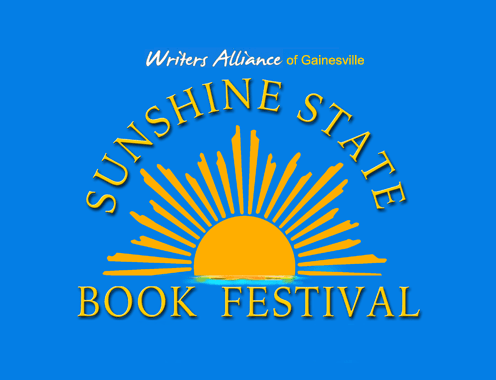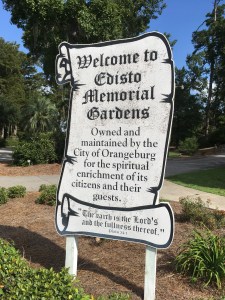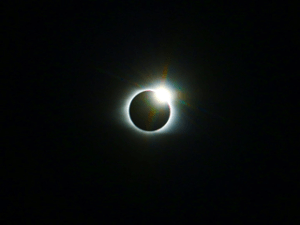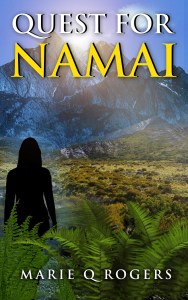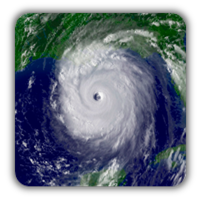This story appeared in the 2015 Bacopa Literary Review. For more information on Bacopa, visit: http://writersalliance.org/bacopa-literary-review. You can order a copy of the 2015 issue through Amazon. It has more short stories as well as poetry and creative non-fiction. Happy reading!

Cattle Gap
Mario stepped off the school bus into the late August heat. “Remember, no TV till I get home,” Aunt Ginny, the driver, told him. “Make a sandwich and do your homework. I’ll be home in forty-five minutes.”
“Yes, ma’am.” Aunt Ginny was his foster mother, not his aunt, but he didn’t want to call her “Mama.” He had a mother. He’d just finished the first week of sixth grade, but he felt so lost. Changing classes was a new experience, and there were so many new faces. He wore nicer clothes than he used to, but old classmates still treated him with contempt.
He should have gone to middle school last year, but he had flunked fourth grade. Not because he was stupid. He’d missed too many days. Last year, he did better. He learned to get himself up in the morning, even if his mother overslept or wasn’t home. He missed his mother.
Mario checked the mail and found a letter from his father in California. “Dear Mario,” it began. “I hope this finds you well. I am quite good, as is Cissy, and the kids. The social worker was here today to do the house check. She said she saw no problem with you coming here. It will take awhile for the paperwork to get to Florida, so we have to be patient. I’m saving money for a plane ticket to come get you.”
A joyful bark interrupted him. Aunt Ginny’s dog Skeeter bounded down the driveway and knocked the letter from his hands. Skeeter always came to greet him. Mario wondered what Skeeter would do after he left. By then, there might be new foster children to greet.
“Hey, Skeeter,” Mario stuck the letter into his backpack to read later. He paused at the cattle gap. This was a relic from the days when the old place had been a farm. The cattle gap was a grate made from railroad rails laid horizontally across a small ditch. Cows would not venture to cross, but it was no barrier for vehicles and most boys.
The ditch held a little water from yesterday’s thunderstorm. It looked like a good place for snakes to hide. Aunt Ginny had warned him to beware of snakes. What he feared even more than snakes was slipping and falling between the rails. He gripped his backpack, inhaled deeply, and balanced on the first rail. Safely across, he let his breath out. He had never lived in the country before, and there were so many things to worry about.
Aunt Ginny’s farm now grew pine trees. Halfway up the driveway, Skeeter started barking again and dove into the palmettos that grew among the trees. Mario heard a great thrashing noise. Something big was in there. What could it be? A bobcat? A coyote? What if it was a bear?
“Skeeter! Come back!” But Skeeter was too busy to obey. Mario set his books down and followed. A fine net settled over his face and he cringed. He brushed and sputtered to get the cobweb off. He wiped his mouth with his shirttail and brushed frantically over his head and shoulders. Could the spider be on him? It would be one of those enormous yellow ones that spun great webs between the trees. Aunt Ginny hated them and killed any she found in her yard. So they hid in the woods to ensnare unsuspecting boys.
He stepped forward. Skeeter stopped barking. Mario eyes darted around and looked down. Skeeter sniffed at a large gopher tortoise which tried to run from him. Its short legs flailed against a palmetto frond, which rattled against its neighbors, creating a noise way out of proportion to the size of the creature.
Mario let out a nervous laugh. “All this fuss over a little ole turtle!” He poked it with a stick and watched the gopher’s head and limbs draw into its shell. Maybe this would make a good pet. He carried it to the house, found an old washtub, and filled a dish with water. He’d ask Aunt Ginny what they ate. He never had a pet before.
Mario went back for his backpack and let himself into the house. He fixed a sandwich and poured a glass of iced tea before settling down at the kitchen table with his homework. Then he remembered his father’s letter. “I’m so looking forward to seeing you again. It’s been so long. You must be nearly a man by now.” His mother had called him her “little man.” He had taken care of her when she couldn’t take care of herself. After they put him in foster care, everyone treated him like a child. His first foster parents even made him go to day care. Aunt Ginny wasn’t so bad. She fussed over him, but she also gave him independence.
“I’m sorry I haven’t been more of a father to you,” the letter went on. “I didn’t know how things were with your mother.” Mario winced. He didn’t like people saying things about his mother. “You see, after we split up, every time I went to see you, we’d fight so bad, I thought it was best to just stay away. I thought sending money every month was enough.” Mario had not been aware of any money. His mother said his father was dead. He had a vague memory of a man arguing with his mother, but he was not sure if that had been his father or a stepfather.
His musings were interrupted by Skeeter’s frantic barking. Mario rushed out. There was a new noise, an intense buzzing, like that of a windup toy out of control. And there, on the ground, not two yards from Skeeter’s nose, was a coiled rattlesnake.
He dared not panic. He called Skeeter, who only kept barking and circling the snake, keeping a distance of four or five feet between them. What should he do? Call for help? But Skeeter could be dead before it arrived. His pounding heart drowned out the sounds of both snake and dog. Mario crept up behind Skeeter and grabbed his collar. He dragged him up the steps and through the front door. Skeeter was an outside dog and Aunt Ginny didn’t let him into the house, but this was an exception.
After the rattling noise ceased, Mario looked out and saw the snake crawling across the yard toward the back of the house. What if it got in the house? He ran to the shed and found a hoe. He tried to sneak up on the snake, but it turned back toward him and started to coil. Mario raised the hoe as high as he could and brought it down onto the snake’s neck with enough force to drive it into the ground. The body twisted every which way, but its neck was broken. Mario chopped with the hoe until he severed the head from the body. He trembled back to the porch and collapsed on the steps.
Then he remembered Skeeter and let him out. Skeeter immediately returned to the snake, but when it didn’t react to his barking, he began to sniff. Mario jumped to his feet. Maybe it couldn’t bite, but it still had venom on its fangs. He scooped up the head with the hoe and buried it in the garden. Only now did he examine the body. He’d never seen a real rattlesnake before and didn’t know they were so pretty. This one had diamond-shaped markings on reddish skin. He had seen belts and hat bands made from snake skins. The body was thicker than his arm and might be enough for more than one belt.
Warily, he picked it up. The skin was not slimy, but smooth and cool, like glass. Mario carried it to the back porch and got a knife from the kitchen. Although he had never skinned anything before, he’d seen it done. He cut off the rattle and put it in his pocket. Then he carefully separated the skin from the carcass, which he buried in the garden. He stretched the skin on an old board and nailed it down.
Only then did he truly appreciate his feat. The snake had been as long as he was tall. He shook the rattle in his pocket. Now he knew what a rattlesnake sounds like. The deadly creature could have killed him, but he had killed it. He marveled at how easy it was to kill. He stood up straight. Perhaps he was a man after all.
Suddenly, he heard the school bus out on the road. He put the skin and the tools in the shed and hosed off the back porch. The bus turned into the driveway. He washed the knife and put it away. He slipped into a chair and opened a book as the bus came to a stop in the yard.
A few minutes later, he heard Aunt Ginny say, “What’s this?” He had forgotten all about the turtle.
“I found him in the woods. Can I keep him for a pet? Do you know what they eat?”
She shook her head. “No, you can’t keep him. They’re an endangered species. The game warden’d throw us both in jail. You need to let him go. He’ll find food in the woods.”
Disappointed, Mario hopped off the porch. The motion jiggled the rattle in his pocket. Aunt Ginny perked up as though listening, but when she heard nothing more, she went inside. Mario carried the turtle with one arm and held his other hand over the pocket to keep the rattle quiet. After he released the gopher, he returned to the house and found Aunt Ginny brushing paw prints off the living room couch.
“What was Skeeter doin’ in the house?”
“Uh, there was a rattlesnake in the yard. I didn’t want him to get bit.”
“You left it alone, I hope.”
Mario couldn’t lie to her. His hesitation told on him.
“Empty your pockets,” she directed.
He had no choice but to show her the rattle. Her eyes bulged.
“Where’s the rest of it?”
“In the shed.” He told her the whole story.
“I don’t think it’d come into the house. It was just trying to get under the house where it’s cool.” When Aunt Ginny saw the size of the skin, she clutched her chest and hollered, “Holy Jesus! Snake that big could kill you!”
“Yes ma’am.”
“It’s a canebrake rattler. That’s why it’s so red. They don’t usually bother anybody. They usually just run away.”
“But it was trying to bite Skeeter.”
“Only because he was harassing it. If you see another one, you and Skeeter stay in the house till I come home. Promise?”
“Yes ma’am.” He felt like a child again. He looked down at his feet.
Aunt Ginny put an arm around his shoulders. “Was you scared?”
“No ma’am. Well, maybe. I guess. I was afraid for Skeeter.”
“You were very brave to protect Skeeter. I’m proud of you for that.” Then she turned him to face her and put a hand on each shoulder. “But from now on, leave snakes alone. I can’t have a foster child bit by a poisonous snake.”
“Yes ma’am.” When he looked into her eyes, they were twinkling.
“What do you plan to do with that?” She meant the canebrake skin.
“Can I take it to California with me?”
“I don’t see why not.”
“What do you think my dad will say?”
Aunt Ginny smiled. “I think he will be very proud of you.”









